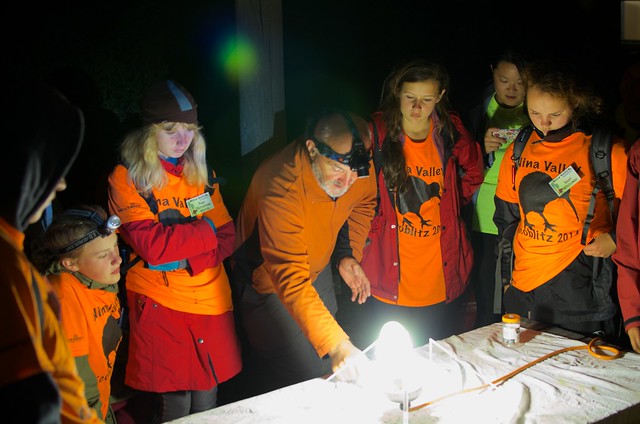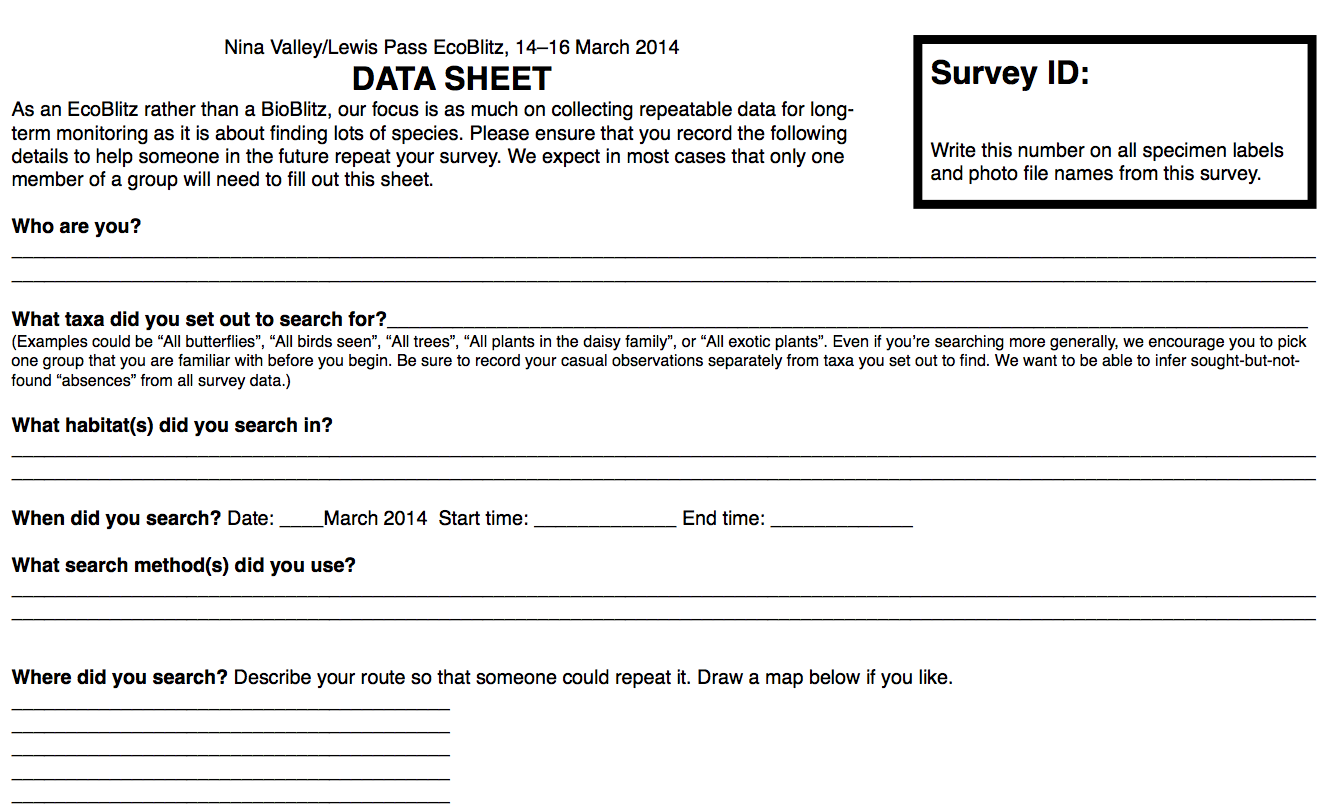RECENT ARTICLES
- CEBRA: An optimised and standardised sampling protocol for BioBlitz
- Stop it people, the plural of anecdote IS data!
- That's no pollinator, that's a flower visitor
- Add a scale to your macro photos
- What to photograph when counting the wild
- Imagine counting the wild on EVERY street in a city!
- My wild counting workflow
- A butterfly flew through
- Why iNaturalist observations without photos can be research grade
- Why you shouldn’t use a spreadsheet for data entry
- All articles ...
Adding some Eco to BioBlitz
The Nina Valley EcoBlitz for secondary school students added ecological surveys to a BioBlitz.
written May 12, 2014 • by Jon Sullivan • Category: Wild Watchers

Back in March I had great fun being part of the Nina Valley EcoBlitz. Our EcoBlitz was a 48 hour event with 175 secondary school students and their teachers, from 21 schools across Canterbury and Westland, and about 40 scientists and a similar number of Lincoln University undergrads and postgrads.
Our mission was to document the biodiversity of the Boyle-Lewis-Nina Valley area of New Zealand’s Southern Alps. We aimed to do that in a fun, educational, and inspirational way that exposed the students to lots of different ecological survey methods. We decided early on in our planning that we were not just a BioBlitz.

A BioBlitz is normally a 24 hour scramble to find as many species as possible in one place. I’ve been involved in a few New Zealand BioBlitzes before and the result is typically a long species list including some exciting discoveries. In keeping with the rush, no records are kept that tie observations to the sampling methods and sampling effort used, two things critical for making the information useful for ecological monitoring. Plus, at the end of the BioBlitz events, everyone goes back to their day jobs and typically little is done to curate and archive the specimens and data (except perhaps for particular taxonomic groups if someone gets keen). Written notes and spreadsheets sit in computers in “maybe one day” folders (I’m guilty of that myself).

BioBlitz events are great fun to be part of, they’re educational, and they often discover unexpected species. I’ve just never been sure that they are that useful for biodiversity monitoring. In a changing world, biodiversity monitoring is increasing important.
We chose the name EcoBlitz to make it clear that we were attempting something different. It was OK if we didn’t collect record numbers of species. What was important is that we collected our observations in well documented and repeatable ways. We want people decades in the future to be able to repeat what we did and understand how this ecosystem is changing.
As part of this, we put a lot of effort into gaining sufficient funding to get ourselves well prepared, including digging up all the available old observations from the wider Nina Valley area, and getting sampling plots set up at the site before the event. We also ensured that there were sufficient resources to curate and identify the photos and specimens after the event. Thanks to all our sponsors for allowing this to happen, especially the Brian Mason Scientific and Technical Trust.

So how did it work out? Reasonably well. Parts of the event collapsed back into typical BioBlitz haphazard searches, since we only interacted with most people via email prior to the event. Coordinating the many disparate groups was difficult across a mountain landscape with no mobile coverage and limited meeting space. Still, we got good data from plant surveys, pitfall traps, Tulgren funnels, bird counts, and tracking tunnels from a good number of plots, plus lots of other observations besides.
All of these observations are getting loaded up on iNaturalist NZ as we complete the curating. In combination, when we’re all done with the identifications, this should be a really useful ecological snapshot of the state of biodiversity in this area.
You can also see lots of photos from the EcoBlitz on their Flickr Group.
